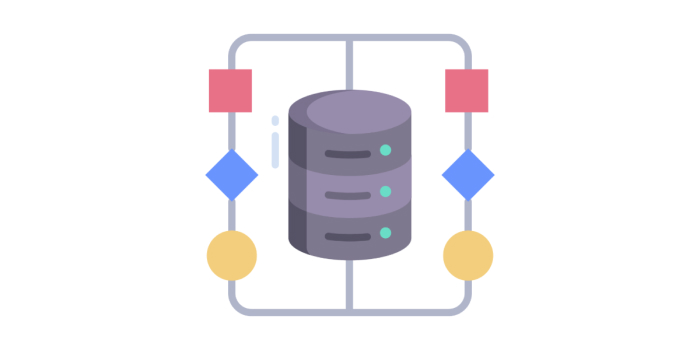
The world of software development is ever-changing, demanding more efficient and dependable testing methods. While traditional manual testing techniques with QA teams have long been the norm, the landscape is evolving rapidly with the rise of automation testing trends. In this blog post, we’ll explore the key shifts shaping the future of software testing in 2024 and beyond.
Why Automation Testing?
Before exploring these trends, let’s revisit the ever-growing importance of automation in testing. While crucial for certain aspects of QA, manual testing can be time-consuming, repetitive, and prone to human error.
Automation testing tools and frameworks streamline the testing process, allowing testers to:
- Increase Efficiency: Automate repetitive tasks, freeing up valuable time for exploratory testing and other strategic activities.
- Improve Accuracy: Reduce human error and ensure consistent test execution across different environments.
- Enhance Scalability: Efficiently test complex applications with a wider range of test cases.
- Deliver Faster Feedback: Automate test execution and reporting, enabling faster feedback loops within the development process.
Top Automation Testing Trends to Watch
Now, let’s explore the exciting automation testing trends that are poised to transform the field:
The Rise of AI and Machine Learning (ML)
Artificial intelligence (AI) and machine learning (ML) are making significant inroads into automation testing. These technologies are being leveraged for:
- Self-Healing Tests: ML algorithms can identify and automatically adjust automated tests when application code or UI elements change, minimizing maintenance efforts.
- Intelligent Test Case Generation: AI can analyze user behavior patterns and application usage data to generate more comprehensive and relevant test cases.
- Enhanced Defect Detection: ML algorithms can learn to identify visual anomalies and potential UI inconsistencies, leading to more robust testing.
The Shift-Left Testing Approach
Shift-left testing encourages integrating automated tests earlier in the development lifecycle, ideally as close to code creation as possible. This proactive approach allows for earlier detection and resolution of bugs, leading to:
- Reduced Development Costs: Fixing bugs early in the development cycle is significantly cheaper than rectifying them later in the process.
- Improved Software Quality: Early and continuous testing helps ensure a higher level of overall software quality.
- Enhanced Collaboration: Shift-left testing fosters better communication and collaboration between developers and testers.
The Continued Growth of API Testing Automation
APIs (Application Programming Interfaces) are the backbone of modern software applications. API testing automation is becoming increasingly crucial for ensuring efficient and reliable communication between software components. Automated API testing tools can:
- Perform Comprehensive API Testing: Validate API functionality, performance, and security across various scenarios.
- Improve Development Speed: Faster API testing cycles expedite the overall development process.
- Minimize Manual Efforts: Streamline API testing and free up resources for other tasks.
Integration with CI/CD Tools: A Seamless Workflow
Continuous integration and delivery (CI/CD) pipelines automate the software development process, enabling frequent code builds, testing, and deployments. Seamless integration between automation testing tools and CI/CD pipelines is crucial for:
- Early Defect Detection: Automated tests are integrated into the CI/CD pipeline, allowing for early identification and resolution of bugs throughout the development cycle.
- Faster Releases: Efficient testing within the CI/CD pipeline facilitates faster and more frequent software releases.
- Improved Quality and Consistency: Automated testing within CI/CD pipelines promotes consistent testing practices and ensures overall software quality.
Cloud-Based Testing: Scalability and Accessibility
Automated Cloud-based testing can also be automated. Cloud-based testing environments offer numerous advantages:
- Scalability on Demand: Cloud platforms provide the ability to scale testing resources up or down as needed, accommodating project requirements and fluctuating workloads. This eliminates the need for expensive on-premise infrastructure.
- Accessibility and Collaboration: Cloud-based testing tools are accessible from anywhere with an internet connection, fostering collaboration among geographically dispersed testing teams.
- Faster Testing Cycles: Cloud environments offer high-performance computing power, enabling faster test execution and quicker feedback loops within the development process.
Testing for Low-Code/No-Code Apps
Low-code/no-code platforms expedite app delivery with minimal hand-coding. As more companies adopt these to empower business users and accelerate digital initiatives, testing needs escalate. Key aspects of testing low-code apps include:
- End-to-End (E2E) Testing: Automation across web, mobile, and other channels supported by low-code apps.
- Empowering Non-Technical Users: Allowing business teams to conduct tests without extensive technical expertise is crucial for adoption.
- Streamlined CI/CD Pipeline Integration: Efficient embedding of testing solutions into continuous delivery pipelines favored by low-code platforms.
Database Testing: Ensuring Data Integrity
Databases are the backbone of many applications, and robust database testing is essential. Automation testing tools can be leveraged for:
- Functional Testing: Verify that database operations like insertions, updates, and deletions function as expected.
- Performance Testing: Assess database performance under heavy loads to identify potential bottlenecks and scalability issues.
- Data Integrity Testing: Ensure data accuracy and consistency within the database, preventing data corruption.
Make Testing Easier with Automated Tools!
Let’s now explore some automated testing tools. Writing code is exciting, but ensuring it works properly is crucial.
Manually testing large amounts of code can be time-consuming and tedious. This is where automated testing tools like qodo (formerly Codium) come in to save the day!
Effortless Test Creation with qodo (formerly Codium)
Imagine automatically generating accurate unit tests for your code! qodo (formerly Codium) takes the burden off your shoulders by creating these tests for you, freeing you up to focus on other coding tasks. This not only saves you time and effort but also helps ensure your code is well-tested and reliable.
Covering All Your Code’s Bases
When writing quality code, it’s important to consider how it might behave in different situations. qodo’s (formerly Codium) “Behavior Coverage” feature helps with this by:
- Identifying Potential Code Behaviors: The tool analyzes your code and identifies different scenarios your code might encounter.
- Generating Targeted Test Cases: qodo (formerly Codium) automatically creates test cases that cover these various code behaviors. This ensures your code is thoroughly tested and less prone to unexpected issues.
Flexibility for Your Coding Environment
No matter what programming language you prefer, qodo (formerly Codium) has you covered. The tool works seamlessly with popular languages like Python, JavaScript, and TypeScript. Plus, it integrates smoothly with popular IDEs (Integrated Development Environments) you might already be using, such as Visual Studio Code, WebStorm, and PyCharm.
Enhanced Testing with TrueTest and AI Visual Testing by Katalon
Katalon Studio, a comprehensive quality management platform, empowers teams to deliver high-quality software. Let’s explore Katalon’s two AI powered testing tools: TrueTest and AI Visual Testing.
TrueTest: AI-Powered Regression Testing Made Easy
Regression testing, the process of ensuring existing functionalities remain functional after code changes, is crucial but often time-consuming. TrueTest leverages the power of Artificial Intelligence (AI) to revolutionize regression testing:
- Smarter Test Creation: TrueTest analyzes real user activity data to identify your application’s most frequently used features and user flows. This data-driven approach allows TrueTest to generate targeted regression tests that focus on these critical areas, eliminating the need for manual test creation and ensuring better test coverage.
- Zero Maintenance: Forget about constantly updating regression tests! TrueTest automatically updates your tests whenever your application evolves, saving testers significant time and effort. This allows them to focus on more strategic tasks.
- Eliminating Blind Spots: Traditional regression testing approaches may miss certain edge cases or user interactions. TrueTest, powered by AI, analyzes various scenarios and user behaviors to identify potential blind spots and create tests that cover these areas. This leads to more comprehensive test coverage and a higher-quality application.
AI Visual Testing: Revolutionizing UI Validation
Ensuring a visually appealing and consistent user interface (UI) is critical for a positive user experience. Katalon Studio’s AI Visual Testing feature goes beyond traditional pixel-perfect comparisons to provide intelligent UI validation:
- Reduced False Positives: Traditional image comparison methods can flag even minor UI changes as failures, leading to wasted debugging time. AI Visual Testing utilizes advanced algorithms to distinguish critical UI changes from acceptable variations, minimizing false positives and ensuring efficient testing.
- Focus on Critical Issues: AI algorithms prioritize visually significant changes that might impact user experience. This allows testers to focus on the most critical issues and address them promptly.
The Benefits of Integration
Both TrueTest and AI Visual Testing seamlessly integrate with the Katalon Studio platform, providing a unified testing experience. This simplifies the testing process and empowers teams to leverage the combined power of AI for comprehensive and efficient testing.
Clear ROI: Saving Time and Resources
- Reduced Manual Testing Effort: TrueTest automates regression test creation and maintenance, freeing up testers for more strategic tasks.
- Faster Time to Market: Faster and more efficient testing cycles lead to quicker releases and deployment.
- Improved Software Quality: Comprehensive test coverage with TrueTest and AI Visual Testing minimizes the risk of bugs and ensures a higher-quality application.
By incorporating TrueTest and AI Visual Testing into your testing strategy, you can streamline the process, reduce manual effort, and deliver exceptional quality software applications that provide a superior user experience.
The Future of Software Testing: A Collaborative Landscape
The future of software testing is a collaborative landscape where humans and automation work together. AI and ML will augment the tester’s role, enabling them to focus on more strategic tasks like test design and exploratory testing. Automation testing trends like shift-left testing and continuous integration will become mainstream practices, leading to faster release cycles and higher-quality software.
Conclusion
By embracing these trends and continuously innovating, software testing professionals can ensure that their organizations deliver exceptional user experiences and stay ahead of the curve in the ever-evolving software development landscape.














